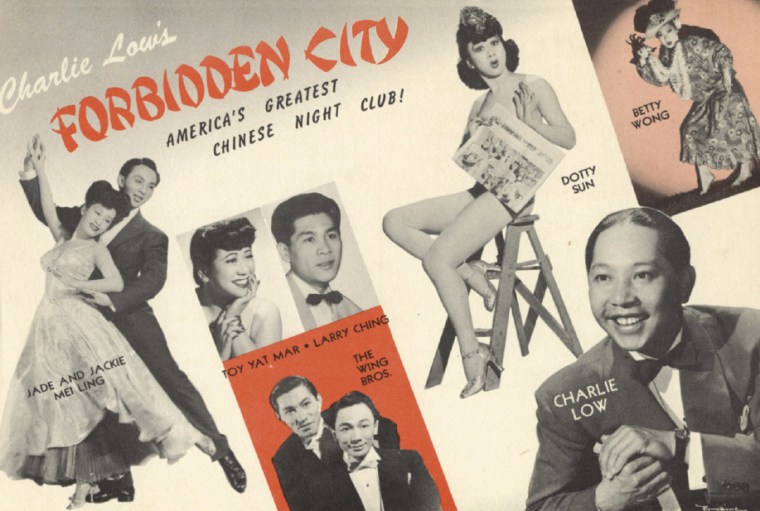When filmmaker Arthur Dong first screened his documentary "Forbidden City, USA" at the Hawaii International Film Festival in 1989, it was a big hit.
The film, which focuses on the San Francisco Chinatown nightclub scene of the ‘40s and ‘50s, was so popular with the audience, that the festival honored it as “best documentary of the decade” in 1990.
“Hawaii audiences embraced the film because many people from Hawaii performed at the clubs, which helped with their success,” Dong, 63, told NBC News. “People said, ‘This is such a Hawaiian story that’s so full of the Aloha spirit.’”
Now, over two decades later, Dong is premiering a digitally re-mastered version of the film at the festival, scheduled for Sunday, Nov. 13.
“The color, contrast, and details – it’s all been enhanced,” Dong said. "UCLA Film & Television Archive meticulously created a new master from original film elements."
Following the screening, Dong will speak about his 2014 book, “Forbidden City, USA: Chinatown Nightclubs, 1936–1970.” The book, based on his research for the film, won an American Book Award in 2015. The Grant Avenue Follies, a senior dance troupe from San Francisco, which features two original dancers who performed in the clubs, will also dance at the event.
"My mother didn’t want me to be in it because it's not a high-class job. It's low grade—dancing, showing your legs and everything. But then it got exciting.”
Dong has been fascinated with this era ever since he was a kid growing up in San Francisco.
“I remember walking by a nightclub and looking at the marquee and glass display case with all these wonderful black and white photos of Chinese people, dressed in zoot suits and 1940s kind of gowns and tuxedos,” Dong said. “And I had never seen Chinese in America dressed like that.”
The club was called Forbidden City, after the imperial palace in China. But when Dong decided to make a film about the nightclub scene, he found that few people wanted to talk about it.
“The notion of women wearing scanty clothing, showing their legs in public was taboo for the conservative Chinese community at that time,” he said. “So I think the Chinese community, by and large, wanted to forget about these clubs, because they were ashamed of them.”
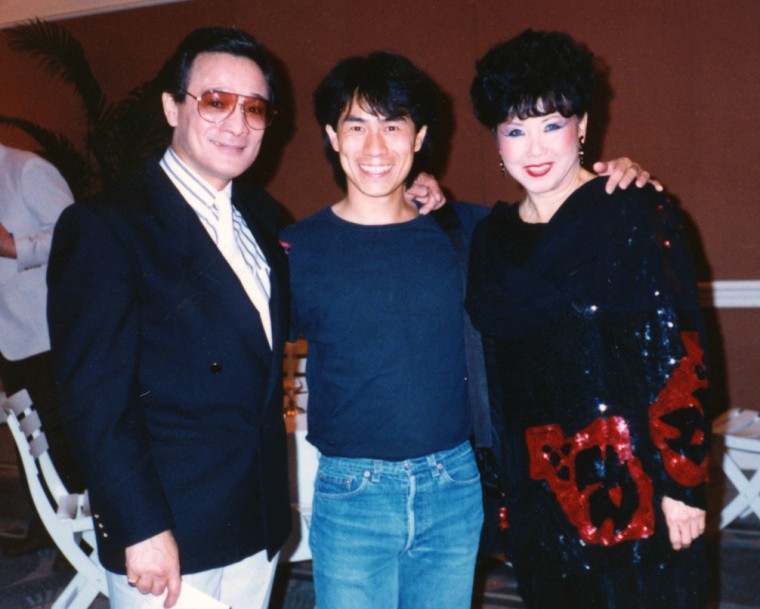
Back then, Chinese parents did not want their children to become entertainers, Mai Tai Sing, a dancer in the nightclubs, told NBC News. She said she and other performers defied racial and cultural barriers to pursue their dreams.
“My mother didn’t want me to be in it because it's not a high-class job,” Sing, 92, said. “It's low grade—dancing, showing your legs and everything. But then it got exciting.”
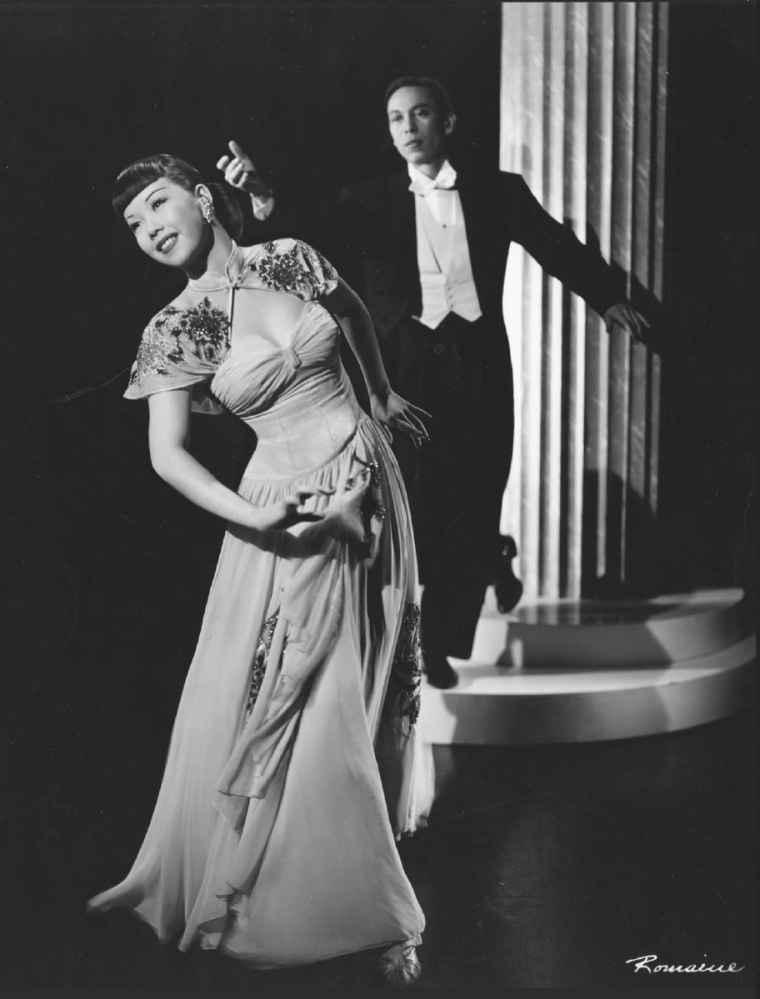
Soon after Sing began dancing as a chorus girl at Forbidden City in the 1940s, she became one of its stars as part of the dancing duo, The Tai Sings. She went on to act in TV and films, and also ran the Ricksha Bar in San Francisco. After moving to Honolulu in the 70s, she became the hostess at Trappers in the Hyatt Regency in Waikiki. Sing still lives in Hawaii.
The Chinatown nightclub scene peaked in San Francisco during World War II, Dong said. While there were several clubs operating in the Bay Area, Forbidden City was the most famous and also featured comedians, acrobats, and a dance band with singers like Larry Ching from Hawaii, who was billed as “the Chinese Frank Sinatra.”
The club was profiled in major media outlets, including LIFE magazine, but that didn't shield the performers from racial taunts from a mostly white audience, according to writer and broadcaster Ben Fong-Torres.
“And this lady, she was looking at me. And there was this look in her eye of complete mystification. And she says to her husband, 'Oh Charlie, he sings just like a white man.'"
“Even while they were entertaining, not unlike the blacks who entertained in New York City at the Apollo [Theater] and the Cotton Club, they would still be subjected to racism,” he said. “So even though you are the stars of the show, to which these paying customers have come to attend, they still feel superior to you and make racist remarks to you, to your face, or shout it out from the audience. And I think that was pretty difficult for most of these entertainers to take. But as Larry Ching said, ‘I had to. Otherwise, I wouldn't be in the business.’”
Still, servicemen, locals, and tourists packed the club as well as celebrities like Bob Hope, Bing Crosby and Duke Ellington.
Jazz singer Jimmy Borges, who was born in Hawaii to a Portuguese, Chinese, and Hawaiian family and died earlier this year following a battle with cancer, remembered what it was like to perform for those audiences.
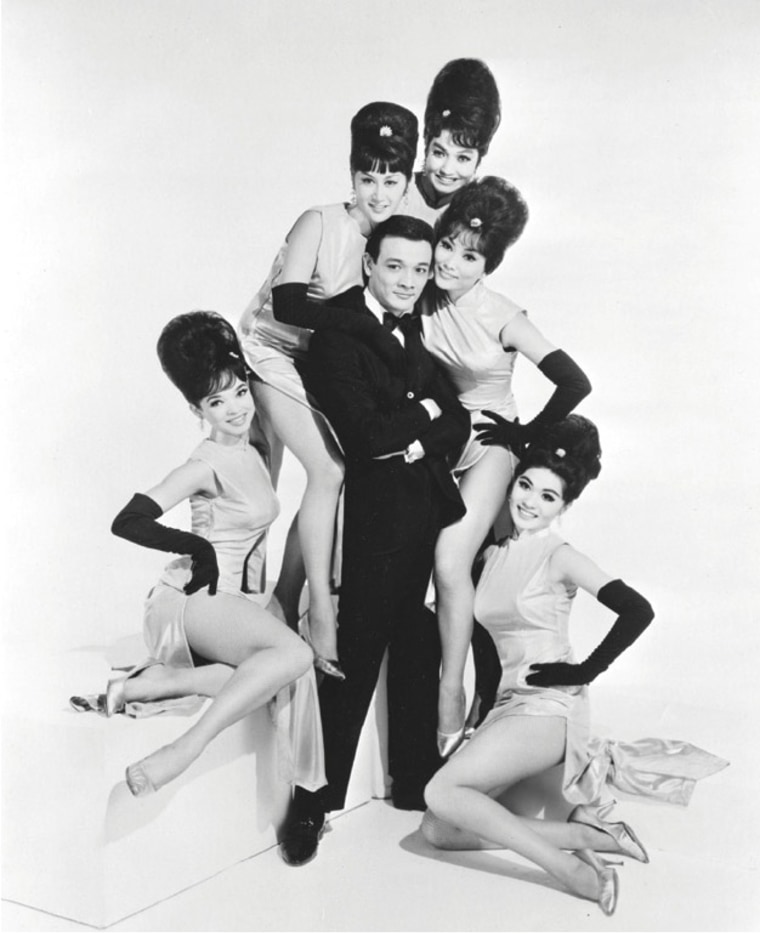
“I was singing ‘Fever:’ ‘Never know how much I love ya. Never know how much I care. You give me fever,’” Borges told NBC News before his death. “And this lady, she was looking at me. And there was this look in her eye of complete mystification. And she says to her husband, "Oh Charlie, he sings just like a white man." And that was so funny, I started to laugh, because she didn't mean it in a bad way. She meant it like she had never seen anybody like me sing a song that was made famous by a white person.”
Borges, who went by the stage name of “Jimmy Jay,” got his big break when actress Shirley MacLaine discovered him at Forbidden City. He went on to star in a Las Vegas production and serenade people around the world. After moving back to Honolulu in the 70s, Borges performed at Trappers and other venues. He also acted in "Magnum P.I." and both the original and modern-day versions of “Hawaii Five-0.”
“We were pioneers,” he said. “Forbidden City allowed us to be pioneers, and we opened the doors for so many young Asians who wanted to get into the world of entertainment in any way, shape or form.”
RELATED: Jazz Icon Jimmy Borges Inspired Others, Brought Hawaii to the World
Borges was the last living male singer who entertained audiences at Forbidden City, according to Coby Yee, who was the last owner of Forbidden City, where she also performed as "China's Most Daring Dancing Doll."
Yee, who just turned 90 and lives in the San Francisco Bay area, said it was good to see some of the performers, who honed their skills at the club, go on to careers in television and movies.
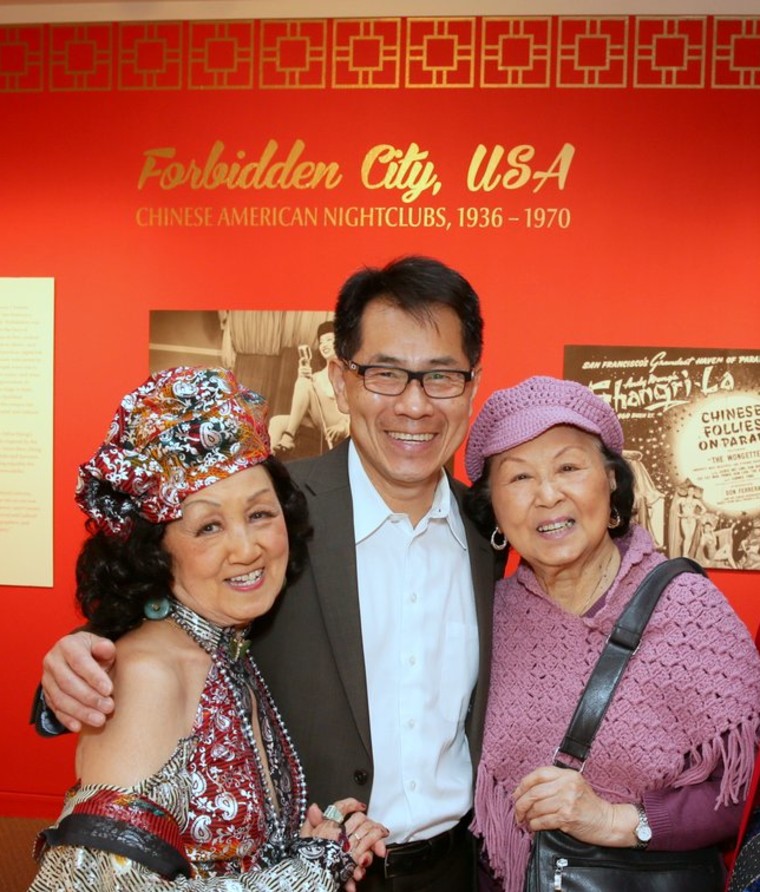
“I remember Pat Morita, who later did ‘Karate Kid,’” she said. “There was Sammee Tong, who was in ‘Bachelor Father’ with John Forsythe. And of course, there was my dance partner, Robert Ito, who did a series called ‘Quincy.’ And then there was Jack Soo, who became famous in ‘Barney Miller.’ He also starred in ‘Flower Drum Song.’”
Those who performed there remain an inspiration to many Asian Americans today, according to Dong.
“Even to this day, Asian Pacific Americans still have a hard time breaking through the glass ceiling in mainstream entertainment. There is progress, but there are still obstacles,” Dong said. “It’s inspiring to see that generations before us broke ground and helped a new generation find their way.”
“These people were rebels,” Dong continued. “They knew what they wanted. They had dreams, they had goals and they weren't going to let larger societal bigotry get in the way. And they had fun doing it — and they did it, by golly — and nothing was going to stop them.”
Follow NBC Asian America on Facebook, Twitter, Instagram, and Tumblr.
